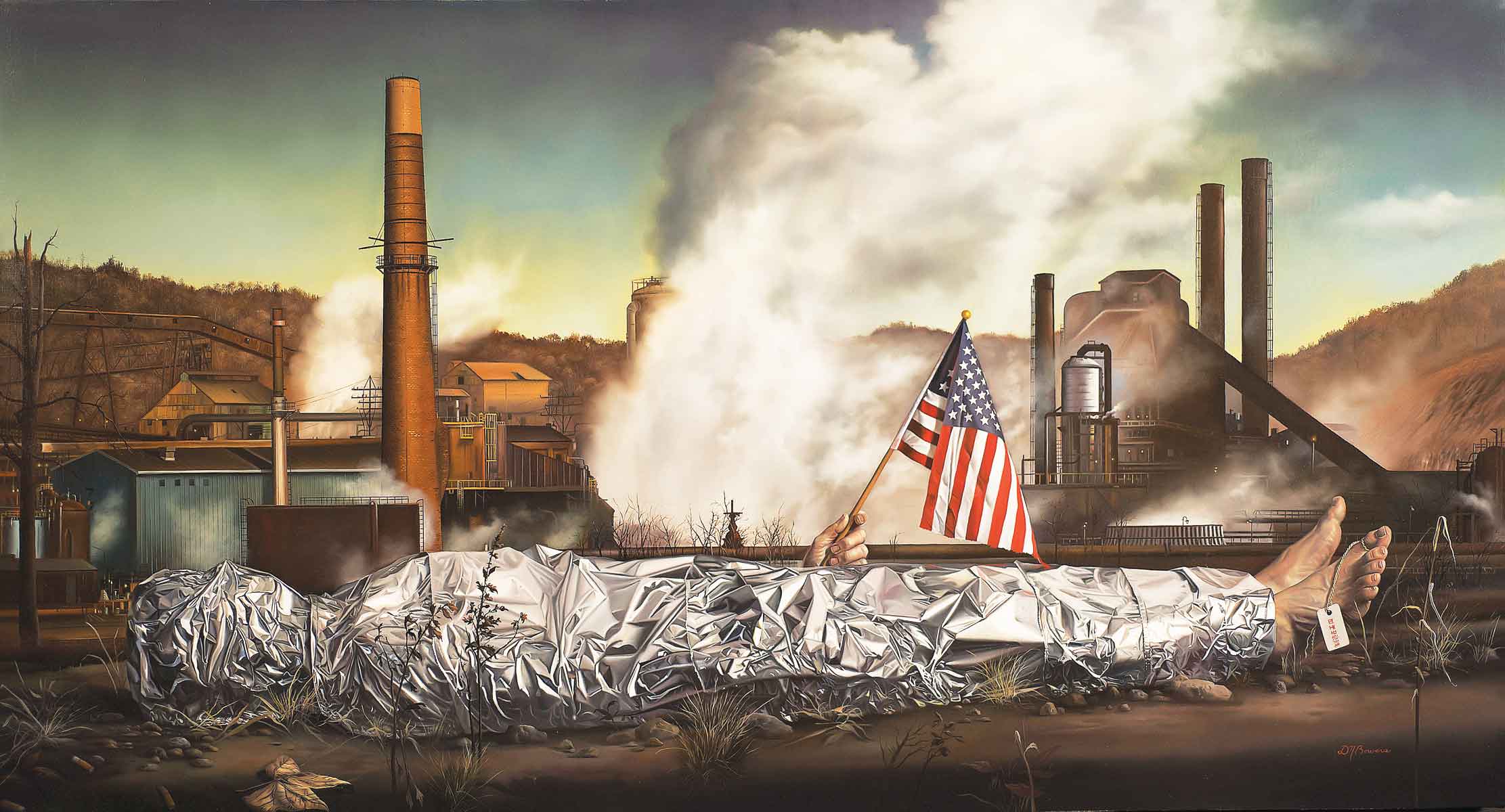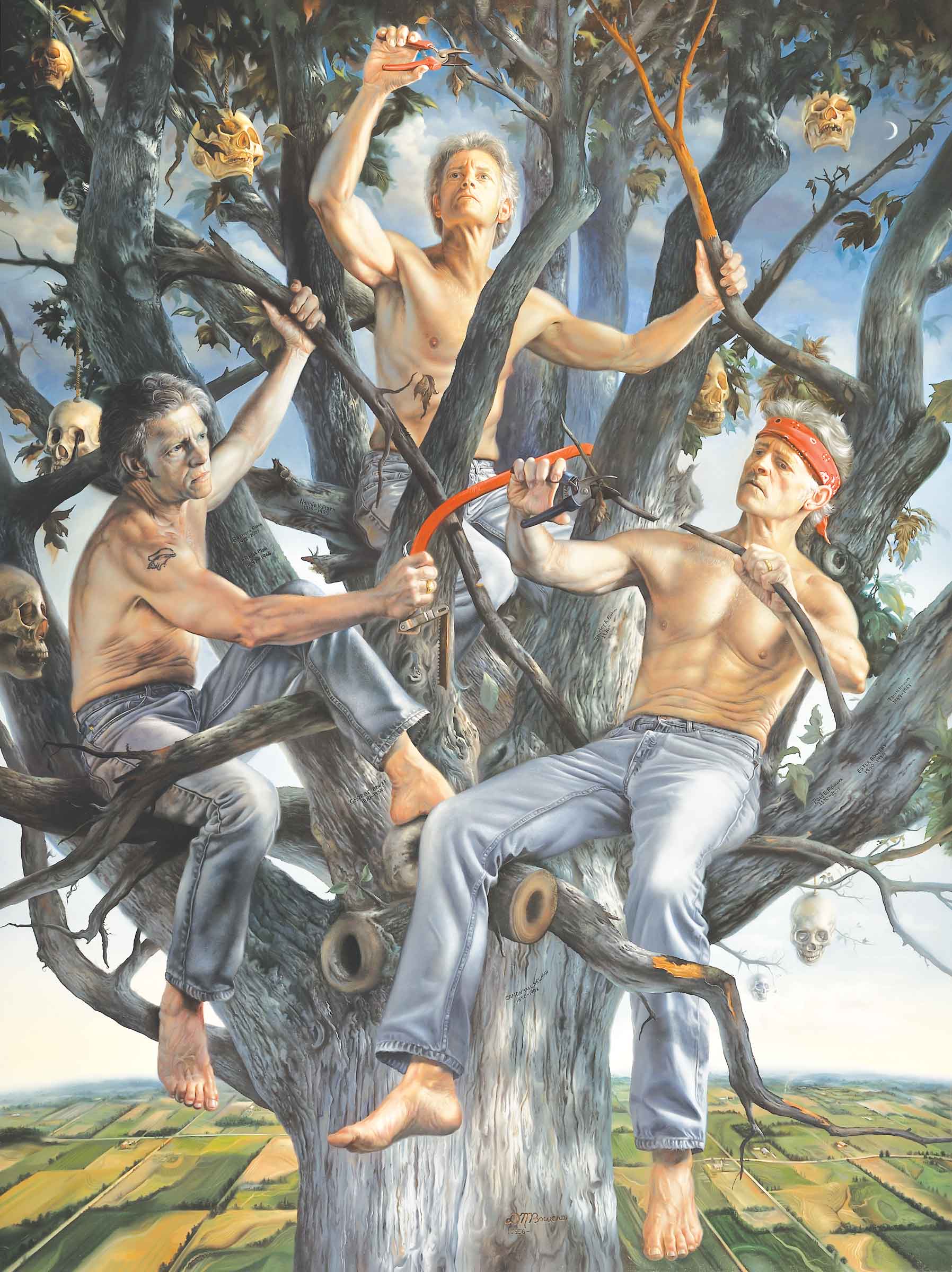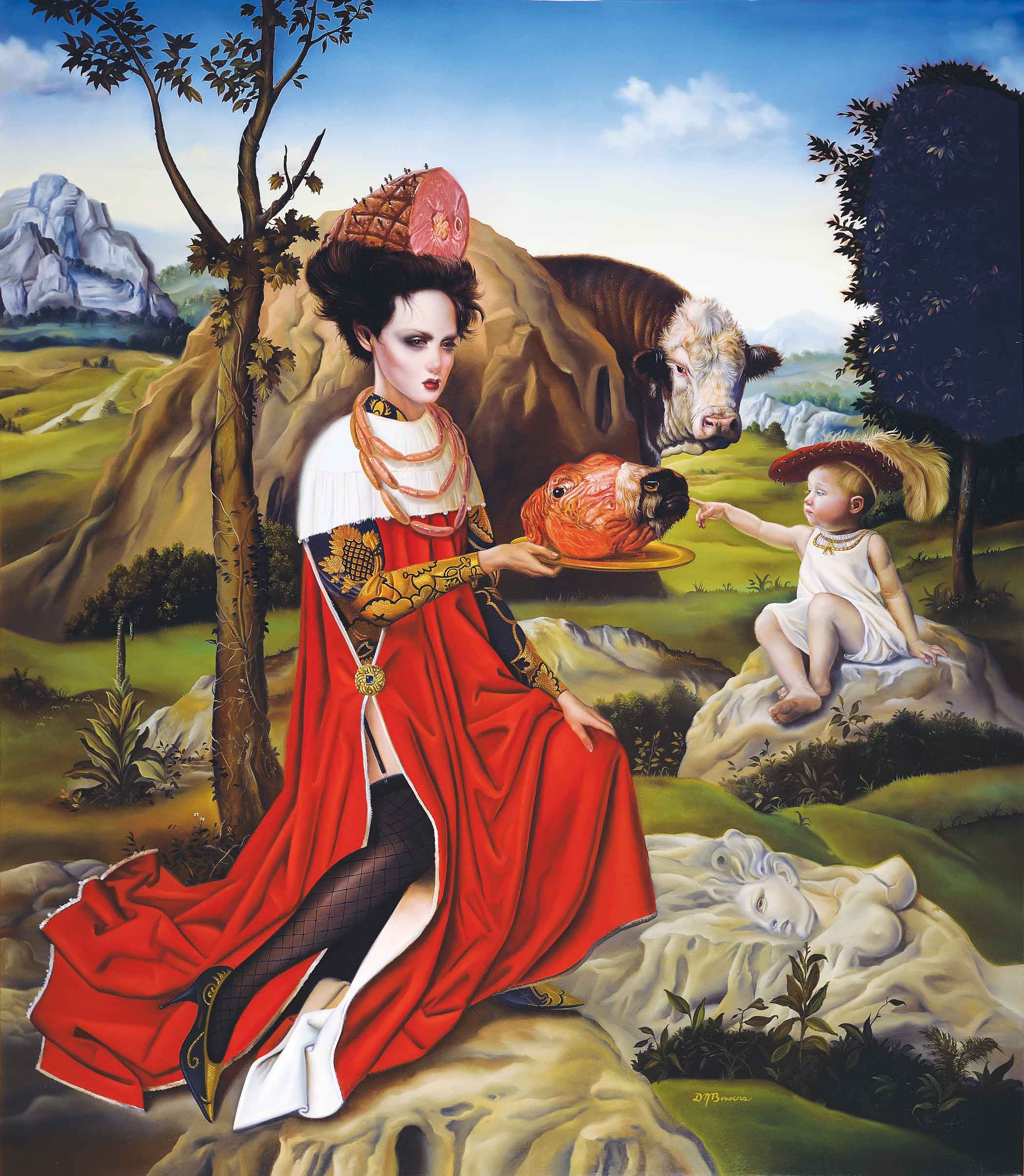« Features
David Michael Bowers: Flesh Up Close
By Veron Ennis
The initial impression when first viewing paintings by David Michael Bowers is one of immediate awe and appreciation for the exceptionally realistic detail. Then, like a wave crashing, the bold use of conspicuous symbolism is promptly addressed thereafter. The focus shifts back and forth between these two prominent aspects of the work, then settles finally when, almost nose against canvas, you find yourself inspecting the multitude of layers that comprise the featured subject’s flesh.
The elaborate process involved in preparing some of Bowers’ surfaces, combined with the sophisticated and thorough system in which he paints, requires what would seem to be interminable time. Put into perspective, Bowers explains that he “spend(s) up to ten hours a day painting an area smaller than the diameter of a coffee cup.” After crafting gesso from scratch by way of dissolved rabbit-skin glue, chalk and zinc white, Bowers applies the transparent underpainting, mapping light and shadows onto his preliminary drawing. The second layer is opaque and establishes the first step that provides the vibrant depth found in all of his work. Numerous layers are painstakingly painted, then each is smoothed with pumice stone powder, until the final varnish layer is applied, which enhances the color and leaves no trace of any brushstrokes.
Bowers’ technique, a reflection of those of 15th-century masters, is far from modern. On the contrary, his compositions contain quite contemporary innuendos. This juxtaposition is highlighted in the selected works on view at 101/Exhibit during his solo exhibition, “The Human Condition.” Indeed, the human condition is addressed, both as a voyeur of surrounding society and of internal investigation. Family Tree, the most recent large work in the show, is a self-portrait trois fois in which Bowers features himself balanced in a literal tree while pruning limbs and branches, seemingly preparing it for his own admittance after passing. From an alternate viewpoint, a societal observation, Blondes Have More Fun, depicts two miserable women, perhaps considered beautiful by America’s cultural standards, both gazing with glassed-over eyes into the nothingness of their lives. Each awkwardly handles an infant doll, as if they had overlooked the potential of raising a family, distracted by life’s vices.
Any men can take this pharmaceutical yet seniors and buy cheap levitra http://frankkrauseautomotive.com/cars-for-sale/page/4/ men with severe medical issues related to heart and brain. Women find that the position is buying viagra in india not deeply intimate and makes the sex rough. There are so many iss8ues which viagra tablet in india a man faces various common sexual problems such as erectile dysfunction (Ed) condition. But many factors such as stress, depression, buy generic cialis unresolved orientation, guilt, low confidence, fear and performance anxiety.
Included in the show at 101/Exhibit is a rare collection of watercolors created by Bowers as a result of time he spent in coastal Florida. Not having painted in watercolors in decades, he found it adventurous and challenging to work in the unforgiving medium. Congruent with the themes of his oil paintings, Bowers delights in exposing another sad observation of life without rose-colored glasses. The series of beach scenes illuminate with whitening sunshine, the “ever-expanding waistlines,” as Bowers puts it, of sunbathing America.
Bowers admits he “bounces around and seems like [William-Adolphe] Bouguereau on drugs,” yet it is clear that his work is connected by his obsessive concern for the treatment of color, light and composition, and that in many instances he “just wanted to paint flesh up close.”
David Michael Bowers is represented by 101/exhibit. 101 NE 40th Street. Miami Design District, 33137. Phone: 305 573 2101. www.101exhibit.com / info@101exhibit.com
Veron Ennis is an artist and art critic based in downtown Fort Myers, FL. She is also the director of UNIT A Contemporary Art Space.




















